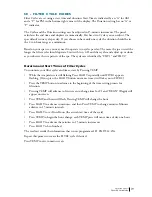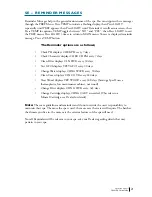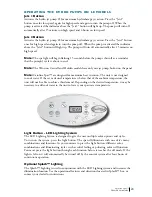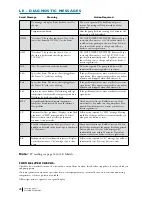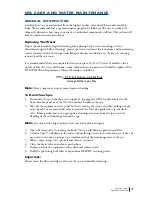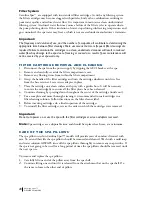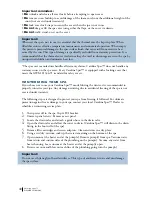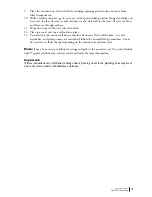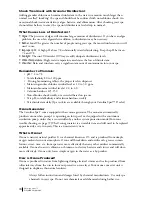
33
Carolina Spas™
OWNER'S MANUAL
Example: At low total alkalinity levels, the water’s pH easily drifts, making frequent pH
adjustments necessary and the added expense of multiple chemical treatments .
On the other hand, a high total alkalinity level keeps the water pH rigidly fixed . If pH
adjustment is necessary, you will need unusually large amounts of treatment chemicals
to change the water’s pH .
Recommended Range: 80 to 120 Parts Per Million (PPM)
Potential Problems:
1 . pH difficult to maintain . If total alkalinity is too low, pH will drift .
2 . Corrosive tendencies . If total alkalinity is too high:
• pH difficult to adjust (it remains fixed .)
• Cloudy water .
• Potential for scaling .
• High pH and low sanitizer efficiency .
TESTING WEEKLY
Adjusting Total Alkalinity
Total Alkalinity can be raised with Alkalinity Increaser, or sodium bicarbonate at the
manufacturer’s recommendation for dosage .
Calcium Hardness
Calcium hardness is the amount of dissolved calcium in your spa water . Too little calcium in the
water will etch plaster surfaces, too much will leave deposits on surfaces and equipment .
Recommended Range: 125-150
Potential Problems:
Calcium Hardness Too Low
• Some surfaces may be etched .
• May lead to equipment corrosion .
Adjusting Calcium Hardness
Raise hardness by the addition of calcium chloride . Decrease calcium hardness by draining spa
and replacing with water containing lower levels of calcium hardness .
Disinfectant
• Brominating Tablets, Granular Bromine and Granular Chlorine are popular disinfectants and
are particularly well suited to compliment your ozone purification system spa . They are also
very suitable products in water with elevated temperatures .
• Brominating Tablets and Granular Bromine are effective as a spa water sanitizer and
disinfectant . Follow manufacturer’s directions for proper dosage . It is recommended to
maintain an active bromine residual of 2 .0 to 4 .0 ppm .
• Granular Chlorine (Dichlor Dihydrate, Lithium Hypochlorite), is designed to dissolve
quickly and completely, provide a steady source of available chlorine to control the growth
of algae, kill bacteria and destroy organic contaminants . It is recommended to maintain
a chlorine residual of between 1 .0 and 3 .0 ppm . Non-Chlorine type shock will oxidize or
destroy most of the organic contaminants that result from bather load . This quick acting
oxidizing shock treatment goes to work almost immediately improving water quality and
eliminating irritating wastes and odor . This product is intended to be a shock treatment
only, and is not a disinfectant .
Calcium Hardness Too High
• May contribute to cloudy water .
• Scaling of surface, piping and equipment .
Note: The use of Biguanide,
Salt generators and other after
market sanitizer/ disinfectant
systems may damage components
and void your spa's warranty.

